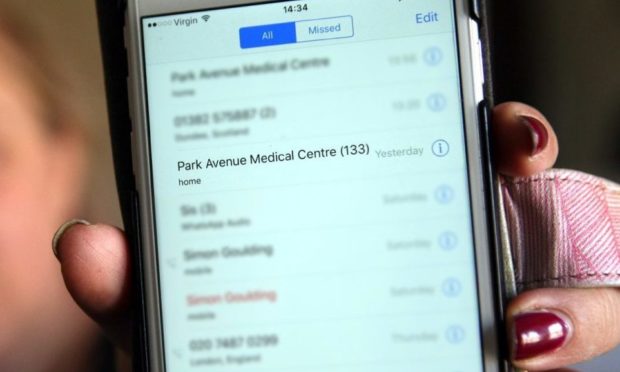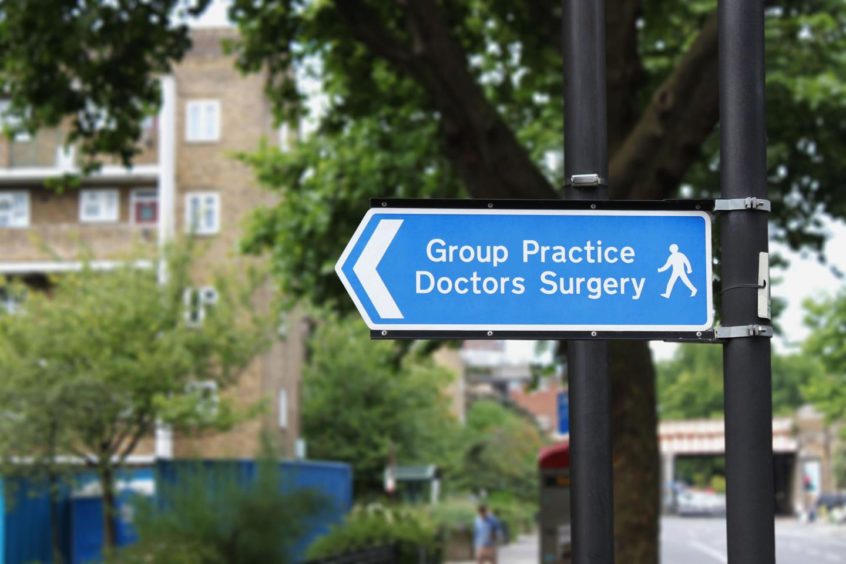
Scottish patients face a clear postcode lottery in access to GPs with the lowest-staffed practices offering just a single doctor for more than 3,000 people.
Some services are struggling with upwards of 10 times as many patients per family doctor compared to the best-staffed practices, analysis of data shows.
It means patients at these struggling GP surgeries can face extremely long waits for appointments or a revolving door of temporary doctors.
The Royal College of General Practitioners (RCGP) Scotland says staff are under “immense strain”.
The Scottish Government says Scotland has more GPs per 100,000 population than the rest of UK and is committed to adding 800 GPs in the next decade.
How busy is my GP?
DCT Media has created an interactive map below so patients across the country can check how their health service fares.
The data, correct as of April 1 this year, ranks each based on patients per GP and also shows the percentage of elderly registered.
It shows huge variations within Scotland’s major cities for people looking to book GP appointments in Dundee, Aberdeen, Glasgow, and Edinburgh as well as across other urban areas such as in Perth & Kinross and Fife.
Residents in towns such as Arbroath, Brechin, and Lochgelly also appear to have fewer GPs than elsewhere.
RCGP Scotland joint chair Chris Williams says he expects staffing to get even worse because the strain of the pandemic could push many GPs to quit or retire.
He said: “We know that our GP workforce is under immense strain.
“A recent survey of our members showed that 38% of those who responded are unlikely to be working in the profession in the next five years. This is deeply worrying.
“We also expect the experience of working through the pandemic and the increased workload pressures that are being experienced within general practice to unfortunately take its toll on workforce numbers.”
He added: “We need reinvigorated efforts to help manage workload demands on general practice, especially as we look towards the recovery of other NHS services.
“There is simply no capacity in the system for general practice to take on further workload demands.
“This must be coupled with concerted efforts to boost the GP workforce and stem the flow of those leaving our profession.”
Information challenges
Dr Williams also says there is a major issue with the way the Scottish Government collects information on staffing in the industry.
Most general practices in Scotland are run by GPs on nationally negotiated contracts.
But he says there is no oversight of how many GPs are full-time or part-time, meaning decision-makers don’t know where the gaps in services are.
RCGP Scotland is pushing for the workforce to be measured in Whole Time Equivalent (WTE) numbers rather than headcount figures.
They say this would measure the number of hours provided rather than how many individual staff there are.
There is also little information on how many locum GPs there are across Scotland propping up practices.
Services which rely too heavily on locums, who are self-employed contractors, are considered high risk.
But it’s estimated more than 80% use some at least occasionally to meet demand.
Long wait for GP appointments
Patients at the worst-staffed health centres commonly complain of long waits on the phone while some are even forced to wait more than two weeks for a routine GP appointment.
A survey of patients across Scotland, England, and Wales conducted just before the pandemic hit last year found huge variations in waiting times.
It revealed 17% get an appointment within one to two weeks, 11% face a wait of two to three weeks, 4% wait three to four weeks and 2% cannot get one for at least four weeks.
Those that do manage to get an appointment may also have to wait a significant period if referred to other NHS services.
Waiting times for GPs have been difficult to measure since the pandemic struck.
Online and phone consultations have increased, taking some of the strain away, but these are only suitable in certain situations.
Not enough GPs to cope with ageing population and pandemic
What is clear is that pre-existing pressures on the health service have been exacerbated by the suspension of services.
The latest figures show more than 100,000 people are waiting to get a key diagnostic test done.
Many have also been hesitant to approach doctors with issues unrelated to Covid-19 or have been unable to get regular wellness check-ups.
This has led to fears of a ticking time bomb.
Doctors believe there could be thousands of untreated and undiagnosed conditions including cancer, mental ill health, and heart problems.
Dr Andrew Buist, chair of the British Medical Association (BMA) Scottish GP Committee, said: “It’s well recognised we are facing a GP workforce crisis in Scotland – we simply do not have enough GPs to cope with an aging population and increased need.
“We have been facing long-term difficulties with recruitment and retention, which have become even more pertinent since the Covid-19 pandemic.
“We need assurances from the Scottish Government that they are on target with their pledge to increase the number of GPs in Scotland by 800 by 2027 and that those 800 will be WTE GPs.”
‘Record number of GPs’ in Scotland
A Scottish Government spokesperson said: “We now have a record number of GPs working in Scotland with more per 100,000 population in Scotland than the rest of UK.
“We are also committed to increasing the number by a further 800 over the next decade and to investing £250 million in direct support of general practice by the end of the current Parliamentary period.
“The trend over a number of years has been towards fewer, larger practices but this does not mean a reduction in service.
“Patient safety is always the priority when a change to practice provision is proposed.”
GPs being sourced locally and from overseas
NHS Tayside says it is investing in attracting younger GPs to the profession.
A spokesperson said: “NHS Tayside, Angus, Dundee and Perth and Kinross Health and Social Care Partnerships (HSCPs) along with GP practices all work together to support delivery of primary care services to patients across Tayside.
“As part of our Primary Care Improvement Programme, the three HSCPs have developed a set of supplementary pharmacy, physiotherapy, mental health, voluntary and nursing services to support patients in all local practices within the region.
“There is a national shortage of GPs; however, over the last six years, NHS Tayside has consistently invested in attracting young doctors into General Practice through its nationally recognised Career Start programme, which has successfully retained local GPs and attracted new doctors to the area from across the UK.
“This programme supports two-year attachments to practices in particular need of increased medical support and has helped to add stability to practices, continuity for patients, and has aided the acquisition of additional skills to the young doctors who have joined the scheme.”
The health board added that more than 40 GPs have been attracted or retained to the area with almost all remaining in local practice at the end of their contract.
The spokesperson added: “We are committed to continuing to recruit and retain the medical and non-medical healthcare services to ensure the primary care healthcare needs of our patients continue to be met.”
Have you noticed a difference in services at your GP surgery in the last few years? Contact us: healthandwellbeing@thecourier.co.uk
For more information about the data and how the rates were calculated and access to the complete dataset, visit DCT Media’s GitHub.

Enjoy the convenience of having The Sunday Post delivered as a digital ePaper straight to your smartphone, tablet or computer.
Subscribe for only £5.49 a month and enjoy all the benefits of the printed paper as a digital replica.
Subscribe © SYSTEM
© SYSTEM